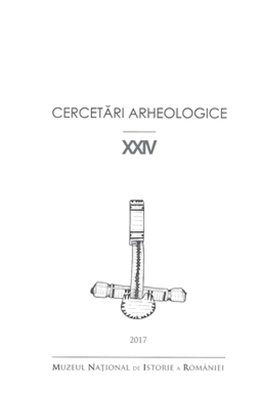Despre un mormânt descoperit la Pecica-Hăblău (Mănăstirea lui Ahtum), județul Arad
About a grave discovered in Pecica–Hăblău (Monastery of Ahtum) (Arad county)
Author(s): Silviu Ion Oța, Alexandra ComșaSubject(s): Archaeology
Published by: MUZEUL NAȚIONAL DE ISTORIE A ROMÂNIEI
Keywords: grave; appliqués; belt; monastery; bronze foil; bones; vertebrae;
Summary/Abstract: The archaeological site Pecica-Monastery of Ahtum is located in Arad County, at the point called Hăblău, on the Mureş River (Pl. I). The monastery is known in the medieval documents dating from the fourteenth century. The archaeological research on site indicated the existence of two churches, partially overlapping. The authors of the research also assumed the existence of an older church which however was completely destroyed, dated to the late tenth century or the beginning of the following one. One of their arguments was the discovery of a grave (G. 1) whose inventory consisted of a belt with appliqués (Pl. II–V; Pl. VI/3–8, 10), thought of as belonging to the tenth-eleventh centuries. The items and several bones of the skeleton were delivered to the National Museum of Romanian History for investigations and restoration. After cleaning the material, I tried to corroborate the information published on the grave with the newly discovered items after washing the osteological remains, as it appeared that there were new elements remained unknown. This is added by the fact that some of the artefacts were not mentioned in any excavation report.
Journal: Cercetări Arheologice
- Issue Year: XXIV/2017
- Issue No: 1
- Page Range: 229-246
- Page Count: 18
- Language: Romanian

